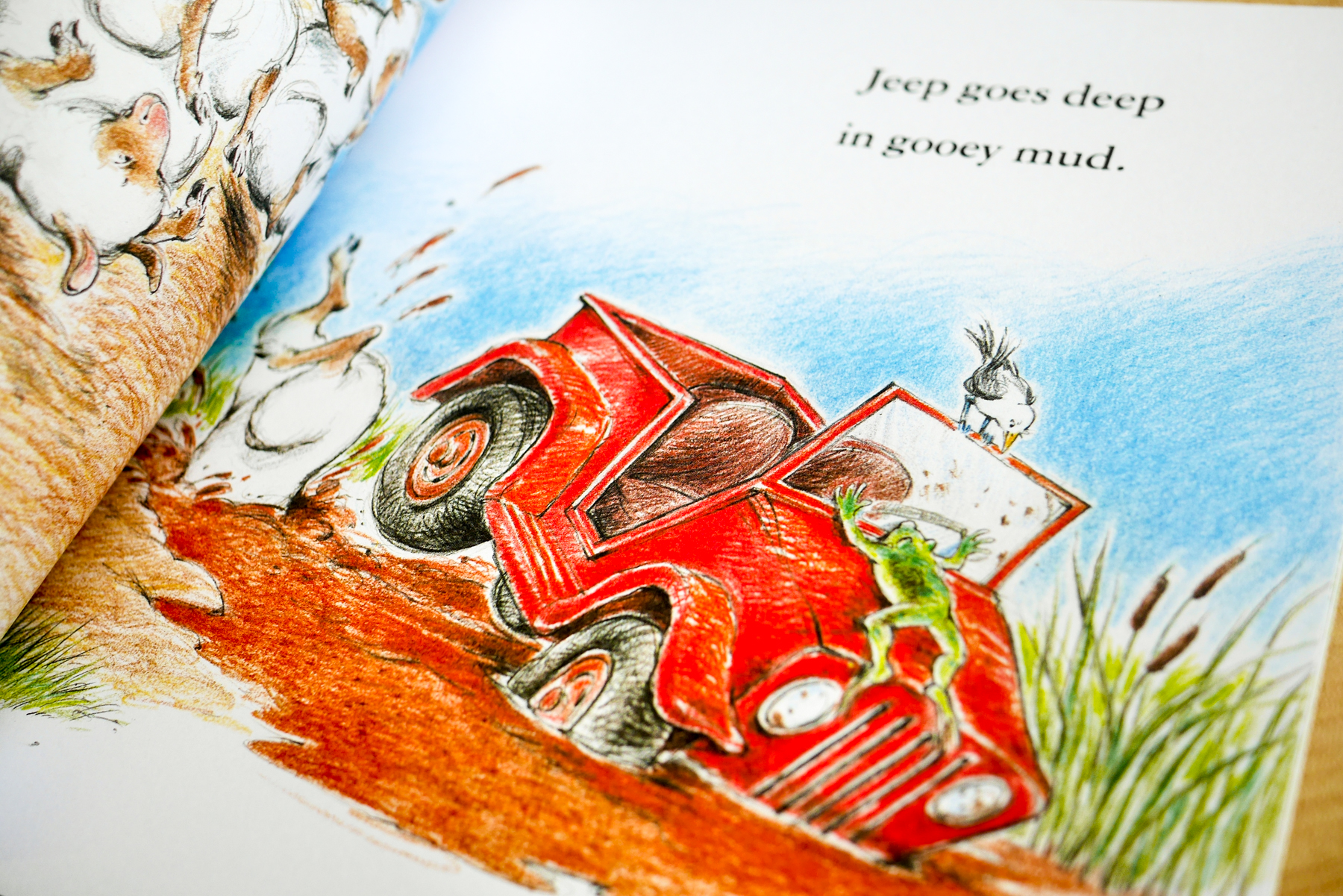By Lori Oczkus, Booksource Advocate
 Students of all ages enjoy being read aloud to. Picture kindergarteners rambunctiously chiming in on each rhyming page of Sheep in a Jeep by Nancy Shaw and third graders howling with laughter as their teacher reads the description of Stuart Little’s classroom teaching antics from E.B. White’s classic treasure. Now imagine sixth graders holding their breath with anticipation as they listen to their teacher read aloud The Giver (Lowry) when main character, Jonas, meets the “Receiver of Memory.” The importance of these types of experiences is invaluable because our students benefit academically and emotionally from the power of reading aloud quality literature and informational text (Trelease, 2013).
Students of all ages enjoy being read aloud to. Picture kindergarteners rambunctiously chiming in on each rhyming page of Sheep in a Jeep by Nancy Shaw and third graders howling with laughter as their teacher reads the description of Stuart Little’s classroom teaching antics from E.B. White’s classic treasure. Now imagine sixth graders holding their breath with anticipation as they listen to their teacher read aloud The Giver (Lowry) when main character, Jonas, meets the “Receiver of Memory.” The importance of these types of experiences is invaluable because our students benefit academically and emotionally from the power of reading aloud quality literature and informational text (Trelease, 2013).
For some of your students, school read alouds will be the only time in their childhoods when someone reads to them. Reading aloud to children of all ages on a daily basis remains a solid research-based practice that promotes many benefits including: motivating students to read on their own, promoting critical thinking, building vocabulary and background knowledge, teaching students tolerance and empathy for others, providing models for writing and creating a sense of community in your classroom (Oczkus, 2012; Anderson, Hiebert, Scott,& Wilkinson, 1985).
Here are some practical, child-centered ways to promote reading through read alouds all year long.
1. Partner Power!
Author and respected educator Lucy Calkins tells us that read-aloud time is the time to “go under” the spell of a beautiful book—to laugh, cry and simply get lost in the story (1997). While we want students to enjoy the read-aloud listening experience without formal “assignments,” we also need to heighten their understanding by making our read alouds interactive. Discussion is the perfect tool for making the read-aloud session more powerful. Also, discussion is a proven strategy that deepens comprehension (Lapp, Flood, Ranck-Buhr, Van Dyke & Spacek, 1997,1997). Training your students to participate in a quick partner discussion before, during or after you read aloud for 15 to 20 minutes will help improve their comprehension.
Choose one of the following prompts at any point in a read aloud. Encourage students to give reasons for their responses (Oczkus, 2012):
- I think this is about…because…
- It was confusing when…because…
- I was surprised by…because…
- Something new I learned was…because…
- The picture in my head that I will remember most is…because…
- It was so (funny, sad, scary, etc) when…because…
- The character…is…because…
- The author probably wrote this because…
Tip: Allow students to choose which of the prompts they wish to discuss. Model ways to agree, disagree, listen carefully and piggyback on comments made by students.
2. Informational Text: Read-Aloud Challenge
The Common Core Standards require students to read lots more of the “real genre”…a.k.a. nonfiction or informational text. Unfortunately, many students are challenged by the difficult vocabulary and concept load found in content area texts. To help familiarize students with informational texts, try reading aloud from nonfiction texts just as you would fiction during your read-aloud block (Oczkus, 2014). Bringing in high interest texts to read for enjoyment will spark the students’ interests in a variety of complex topics. Include all types of informational texts including maps, how to articles, biographies, newspaper or online pieces and picture books. Allow students to take turns choosing an informational text for you to read aloud to the class. The student needs to share why he or she selected that particular text.
Tip: Use the document camera to show informational texts on the screen while you read them aloud to the class. Students need to see the charts, maps, diagrams, etc.
3. Famous Last Words (Oczkus, 2004)
A very natural way to slip in comprehension work every time you read aloud is to incorporate the strategy I like to call, “Famous Last Words.” If you are in the middle of a text and need to start again another day or even later in the same day, ask the students to reflect on the very last words that you read aloud. When you return to the text, go back to the last paragraph or sentence that you read aloud in the previous session. Explain to students that you are jogging your memory so you can pick up where you left off. Read aloud the last paragraph or even the last page. Ask students to turn and talk to partners about what they recall from the reading. They can discuss what was interesting, confusing or important. This simple practice of rereading one sentence or so from yesterday’s text teaches students to do the same when they read on their own. They learn to monitor their comprehension.
Tip: Use the name of the strategy, “Famous Last Words,” with students. This way you can cue students to use the same strategy when they read on their own. Explain that “Famous Last Words” is a great way to keep track of understanding while anticipating what will happen next in the text. Throughout the day when students are reading, encourage them to use the “Famous Last Words” strategy!
When my children were young they simply would not let my husband and me skip their bedtime read alouds. In the classroom our students also beg us to read aloud when we make it a regular part of the school day. Reading aloud to students sets the foundation for a love of literacy, builds important skills and teaches students to enjoy learning.
About the Author
Lori Oczkus is a best-selling author, independent literacy consultant and Booksource Advocate. Her latest book is Just the Facts: Close Reading and the Comprehension of Informational Text (Shell/IRA, 2014). She can be reached at loczkus52@earthlink.net or www.lorioczkus.com.
Bibliography
Anderson, R.C., Hiebert, E.H., Scott, J.A., & Wilkinson, I.A.G. (1985). Becoming a Nation of Readers: The Report of the Commission on Reading. Champaign, IL: Center for the Study of Reading, University of Illinois.
Calkins, L. (with Bellina,L.) (1997). Raising Lifelong Learners: A Parent’s Guide. Cambridge, MA: Perseus.
Lapp,D.,Flood,Jl,Ranck-Buhr,Wl, VanKyke,Jl, & Spacek,S. (1997). “Do you really just want us to talk about the books?” A closer look at book clubs as an instructional tool. In J.R. Paratore & R.L. McCormack(Eds), Peer talk in the classroom: Learning from research (pp. 6-23. Newark, DE: International Reading Association.
Oczkus, L. (2012) Best Ever Literacy Survival Tips: 72 Lessons You Can’t Teach Without. Newark, DE: International Reading Association.
Oczkus, L. (2014) Just the Facts: Close Reading and Comprehension of Informational Text. Huntington Beach, CA: Shell Education/ International Reading Association
Oczkus, L. ( 2004). Super Six Comprehension Strategies: 35 Lessons and More for Reading Success. Norwood, MA: Christopher Gordon.
Shaw, N. (1986 ) Sheep in A Jeep. New York, New York: Houghton Mifflin Harcourt.
Trelease, J. (2014) The Read Aloud Handbook: 7th Edition. New York, New York: Penguin.
White, E.B. (1973 ) Stuart Little. New York, NY: Harper Collins.
Lowry, L. (1993 ) The Giver. New York, NY: Random House.






Leave A Comment